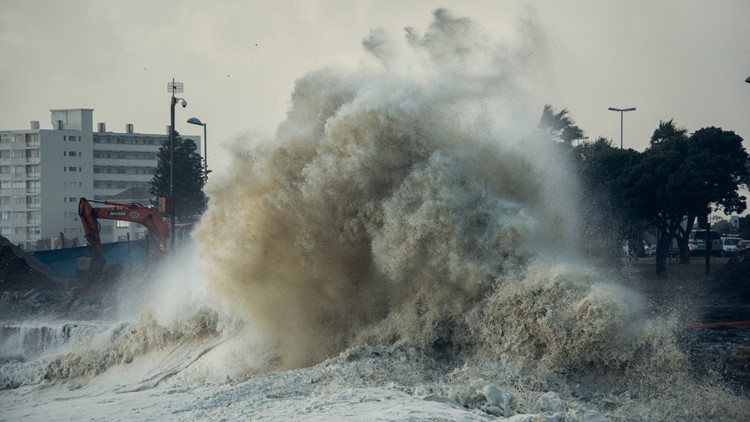Storm surge is historically the leading cause of hurricane-related deaths in the United States, according to the National Weather Service.
The term is used to describe the wall of water that is pushed toward the shoreline during a hurricane, the Florida Climate Center says. Storm surge combines with the local tide and wind-driven waves to push a large amount of water onshore, which frequently leads to significant damage.
Several VERIFY readers have asked us questions about storm surges. We fact-checked three claims.
THE SOURCES
QUESTION #1
Does a hurricane’s category ranking always correlate to the storm surge threat?
THE ANSWER
A hurricane’s category ranking does not always correlate to its storm surge threat.
The five-category Saffir-Simpson Hurricane Wind Scale estimates the severity of the storm and its impacts. “Major hurricanes” fall under Categories 3, 4 and 5 on the scale.
The scale is a 1 to 5 rating based on a hurricane’s peak wind speeds. It does not take into account storm surge and other potentially deadly hazards, according to the National Hurricane Center (NHC).
That’s because there are “too many exceptions” for storm surges to fit into the Saffir-Simpson scale, the National Weather Service (NWS) says.
In the past, some weaker Category 1 and 2 hurricanes have produced higher storm surges than major hurricanes.
Hurricane Irene, which made landfall in North Carolina as a Category 1 hurricane in August 2011, caused an 8-to-11-foot storm surge, according to NWS.
In Sept. 2008, Ike made landfall in Texas as a Category 2 hurricane. That storm produced a 20-foot storm surge.
Hurricane Katrina, a Category 3 storm at landfall in Louisiana, produced a 28-foot storm surge.
All of these hurricanes caused a higher storm surge than Charley, which made landfall in Florida as a Category 4 storm in 2004. Hurricane Charley produced a storm surge of 6-to-8 feet, NWS data show.
QUESTION #2
Are certain areas more vulnerable to higher storm surge?
THE ANSWER
Some areas are more vulnerable to higher storm surge for a variety of reasons, including the shape of their coastline and seafloor.
Areas with coasts that bow inward are more likely to see higher storm surges than those that bow outward, according to the UCAR Center for Science Education.
The shape of the seafloor also contributes to an area’s risk of higher storm surge. Coastal areas where the nearby seafloor is shallow are more likely to be affected by large storm surges than coastal areas with a deep seafloor, the UCAR Center says.
For example, the Big Bend Coast of Florida is an “exceptionally storm surge-vulnerable location” due to the curvature of its coastline and underwater topography, Daniel Swain, a climate scientist at UCLA, told VERIFY.
The Big Bend is where the peninsula merges into the Florida Panhandle, just southwest of the capital of Tallahassee and north of the Tampa metropolitan area.
Other factors also influence storm surge, including the hurricane’s angle of approach, intensity, size and forward speed, according to NWS and the UCAR Center.
QUESTION #3
Are hurricanes the only severe weather event to produce storm surge?
THE ANSWER
Hurricanes are not the only severe weather event to cause storm surge.
Extratropical storms, such as Nor’easters, can also produce storm surges, Swain said. Nor’Easter storms, which occur along the East Coast, may hit at any time of year, but they are “most frequent and violent” between September and April, NWS says.
In November 2009, eastern North Carolina was hit with flash flooding and storm surge from a Nor’Easter, according to NWS.
Though extratropical storms like Nor’Easters can produce storm surges, those surges are “usually much weaker” than those associated with hurricanes, Swain said. That’s because the wind speeds are usually much lower and the barometric pressure is higher in extratropical storms compared to hurricanes, he explained.



